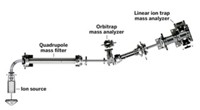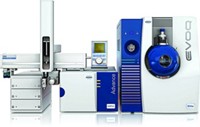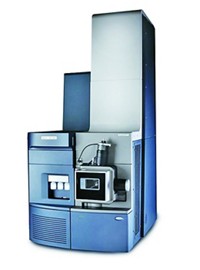Advertisement
Grab your lab coat. Let's get started
Welcome!
Welcome!
Create an account below to get 6 C&EN articles per month, receive newsletters and more - all free.
It seems this is your first time logging in online. Please enter the following information to continue.
As an ACS member you automatically get access to this site. All we need is few more details to create your reading experience.
Not you? Sign in with a different account.
Not you? Sign in with a different account.
ERROR 1
ERROR 1
ERROR 2
ERROR 2
ERROR 2
ERROR 2
ERROR 2
Password and Confirm password must match.
If you have an ACS member number, please enter it here so we can link this account to your membership. (optional)
ERROR 2
ACS values your privacy. By submitting your information, you are gaining access to C&EN and subscribing to our weekly newsletter. We use the information you provide to make your reading experience better, and we will never sell your data to third party members.
Analytical Chemistry
Inside Instrumentation
NEW AND NOTABLE AT PITTCON 2005
by Stephen K. Ritter
March 28, 2005
| A version of this story appeared in
Volume 83, Issue 13
Infrared and Raman
Smith's Detection introduced the ChemID FTIR analysis system designed for rapid benchtop characterizations. The spectrometer uses a diamond-attenuated total reflection sampling interface, which requires little or no sample prep, so that grab samples can be tested throughout a reaction for compound identification, polymorph screening, and reaction monitoring, including kinetics studies. An integrated imaging system with 90X magnification allows visualization of the sample, which is useful for crystal identification. http://www.smithsdetection.com
Horiba Jobin Yvon presented the new LabRAM Aramis, the latest in the line of LabRAM Raman microscopes. Computer-controlled selection of up to four different gratings and filters makes the instrument suitable for applications in pharmaceutical formulation development, forensic analysis, and biological screening. Rapid switching between the different excitation lasers enables different wavelengths to be selected for target samples. http://www.jobinyvon.com
Polychromix unveiled its near-IR Digital Transform Spectrometers, which are based on diffractive microelectromechanical (MEMS) technology. The hand-sized units use a spatial light modulator and single InGaAs detector and are targeted for general industrial processing and agriculture and food science applications, such as flue-gas monitoring and trans-fat content measurements. Two of the instruments cover the 900–1,700-nm and 1,700–2,500-nm ranges, respectively, while a third high-resolution version is designed for specific narrow-band applications. http://www.polychromix.com
Thermo Electron presented the Nicolet 380, its new FTIR spectrometer with software-guided experiments aimed at quality-control labs in the chemical and pharmaceutical industries. The instrument, with better than 0.01-cm–1 precision, is designed to boost productivity and efficiency for labs with optimized workflow processes. http://www.thermo.com/ftir
Aspectrics displayed its encoded photometric EP-IR analyzer, an instrument that performs like an FTIR but uses concentric encoding tracks on a rotating disc in place of the elements of a conventional detector array. The disc can use up to 256 tracks for simultaneous data collection on each optical channel and can be configured for visible through mid-IR spectral regions for parts-per-million-level on-line gas and vapor-phase monitoring. http://www.aspectrics.com
X-ray fluorescence
Rigaku/MSC introduced two wavelength-dispersive X-ray fluorescence instruments, the ZSX Primus II and ZSXmini II. The Primus II is a 4-kW spectrometer with a 30-m end-window tube (the thinnest available in the industry) and an analytical range from beryllium to uranium. It has a "tube above" (inverted) optical system designed for sequential measurements of polymers and other materials. The ZSXmini II is billed as the first benchtop WD-XRF instrument for cost-effective analyses. http://www.rigakumsc.com
Innov-X Systems introduced its QXi benchtop X-ray fluorescence analyzers for detection of elements from chlorine to uranium. The instrument uses a miniaturized X-ray tube source to generate a laser-focused X-ray beam. The QXi is designed for quantitative testing of small or nonhomogeneous samples, such as lead-free solders for electronics production, as well as metals and alloys. It has a color CCD camera that can take digital images of samples with magnification to 68X. http://www.innov-xsys.com
Spectro displayed a polarized X-ray fluorescence analyzer, the Spectro iQ, for multielement analysis of additives in oils, cement, and other materials. A "low S" version allows analysis of sulfur in fuels to less than 1 ppb. An advanced optics system provides improved sensitivity over other energy-dispersive XRF spectrometers for key elements such as sodium, aluminum, and phosphorus. http://www.spectro.com
Process R&D instrumentation
Wyatt Technology unveiled the Dawn Heleos multiangle light-scattering detector for simultaneous measurements of the radius and molar mass of macromolecules and proteins. Heleos has more than twice the sensitivity and 100 times the dynamic range of its predecessor, the Dawn EOS. Wyatt also introduced Dynapro, a dynamic light-scattering system that measures Brownian motion of solutions to evaluate their suitability for forming crystals for X-ray studies. http://www.wyatt.com
C. I. Analytics presented the superC multielement analyzer, designed to overcome the challenges of detecting parts-per-million to parts-per-billion levels of toxic gas impurities in polymer-grade ethylene and propylene process streams. The superC uses a chemical detection tape with colorimetric detection for up to eight different impurities, including arsine, phosgene, and hydrogen fluoride. The standard instrument is designed for single-stream analysis; an optional package allows for analysis of up to six sample streams. http://www.cianalytics.com
Ultrasonic Scientific displayed a high-resolution ultrasonic spectroscopy (HR-US) Colloid Stability Analyzer for nondestructive analysis of emulsions and suspensions at pressures up to 10 bar. Designed for use in R&D, process, and quality-control applications in the pharmaceutical, food and beverage, and personal care industries, the HR-US analyzer provides quantitative information on average particle size, particle concentration, and rate of sedimentation/creaming to assess the level of flocculation or aggregation in suspensions. http://www.ultrasonic-scientific.com
Wilks Enterprise exhibited the "pocket-sized" InfraSpec mid-IR spectrometer, which uses a detector array with linear variable filter to function as a stand-in for FTIR instruments where they are not practical to use. The detector has 12-cm-1 resolution in the mid-IR (filter ranges are 2.5 to 4.8 m and 5.5 to 10.5 m). The portable instrument can be used for analyzing fertilizer in soil, materials verification for quality control on the plant floor, and carbohydrate and trans-fat levels for food processing, among other applications. http://www.wilksir.com
Supercritical Fluid Technologies introduced a line of three benchtop or rack-mounted extraction-reactor systems that can accommodate various supercritical media for research and teaching lab settings up to pilot-scale work. Stainless steel reaction vessels can handle volumes from 50 mL to 4 L and can contain supercritical fluids at pressures up to 10,000 psi. The devices are suitable for use in pharmaceutical, food, and polymer processing, as well as for reaction chemistry. http://www.supercriticalfluids.com
Tiger Optics presented its MTO-LP-H2O system as the first low-pressure process gas moisture analyzer based on cavity ringdown spectroscopy. The instrument measures moisture to low-parts-per-billion levels in hydride gases, such as ammonia, phosphine, and arsine, making it useful for specialty gas production and semiconductor processing. The light-measurement system avoids direct instrument contact with the sample so that corrosive or reactive samples can be monitored. http://www.tigeroptics.com
Axsun Technologies showed the IntegraSpec line of miniaturized near-IR spectrometers designed for pharmaceutical applications development and industrial process monitoring. IntegraSpec instruments include a proprietary laser source and a 14-mm-long, chip-based optical bench with a choice of spectral ranges in the 1,320–1,970-nm region. The devices operate at low power and require no consumables or maintenance. http://www.axsun.com
Nuclear magnetic resonance
Bruker Biospin added several new products to its line of high-field NMR instruments, including the 850 US2 MHz standard-bore (54-mm) instrument with an actively shielded magnet. The 850 US2 combines Bruker's Avance II electronics and UltraShield and UltraStabilized technologies and is designed for protein structure determination and advanced materials research. It fills the gap between 800-MHz and 900-MHz systems, giving users another price option, according to the company. http://www.bruker-biospin.com
Varian debuted the Varian NMR System, available at magnet field strengths from 300 to 900 MHz, for use in a variety of applications in industry and academia, ranging from protein structure determination to function and dynamics studies to small-molecule structure elucidation. At the heart of the new series is Varian's DirectDrive architecture, which can "improve the rate of implementation of complex, information-rich NMR experiments" to provide up to a 10-fold gain in throughput compared with current NMR methods. http://www.varianinc.com
Chromatography
ESA Biosciences introduced the Corona Charged Aerosol Detector for HPLC, which won a Pittcon Editors' Silver Award. The Corona CAD, the first new type of HPLC detector to be introduced in nearly 20 years, has about 10 times the sensitivity of currently used detectors. The detector works by nebulizing the column eluant and evaporating the droplets at ambient temperature to produce particles. The particles are then charged by collisions with positively charged gas molecules from a second stream, after which the analyte particles are guided to a collector where their charge is transferred in direct proportion to their masses. http://www.esainc.com
Jasco unveiled several new instruments, including the X-LC extreme high-pressure system (up to 15,000 psi) and the HT-SFC high-throughput supercritical fluid system. The X-LC is billed as the fastest high-pressure system available and is capable of collecting more than 100 data points per second using a UV-visible detector. The instrument accommodates a range of detector types and autosamplers, and its small footprint takes up half the space of a traditional HPLC. The HT-SFC with chiral column and circular dichroism detector can quickly resolve chiral compounds and determine enantiomeric excesses. http://www.jascoinc.com
SLS Micro Technology previewed the "first nanotech-based separation column," a miniaturized GC column built on a silicon chip that uses a surface layer of carbon nanotubes to effect separations. The column is targeted for use in SLS's hand-sized GCM 5000 gas chromatograph with thermal conductivity detector that is designed for process analysis of organic compounds. The nanotube column now allows the GCM 5000 to measure CO2, CH4, and NOx gases for safety, environmental, and process applications. http://www.slsmt.com
PerkinElmer introduced a gas chromatography system made by integrating the new TurboMatrix Headspace Sampler with PerkinElmer-Arnel's TOGA (transformer oil and gas analyzer) GC. The instrument provides automated compliance testing of transformer insulation oil "fault gases" (H2, O2, CO, CH4, and others) in the electric power industry, adding headspace sampling capabilities to the traditional analysis method. The TurboMatrix coupled with a flame-ionization detector is the basis of another PerkinElmer offering targeted for low-parts-per-billion detection of off-flavor components (diacetyl impurities) in beer, replacing the industry-standard electron-capture detector. http://www.perkinelmer.com
Dionex and LC Packings displayed the UltiMate 3000, a "nano LC system for front-end MS protein and peptide separations." The instrument has a dual-gradient pump, UV detection, and autosampling all within a single tower. The UltiMate is targeted for use with high-speed monolithic columns and can perform at flow rates as low as 50 nL per minute. The chromatograph interfaces with most mass spectrometers and can be controlled by Dionex's Chromeleon software or with other MS vendor software packages. Dionex also introduced the ICS-3000 ion chromatography system, which garnered a Pittcon Editors' Silver Award. http://www.dionex.com
Waters showed the Evaporative Light Scattering Detector engineered for use with the company's Acquity Ultra Performance LC system, which was introduced in 2004. The detector allows researchers to use a single analytical run to evaluate a greater number of UV-visible-transparent molecules, such as sugars, triglycerides, and phospholipids, as well as some antibiotics and natural products. http://www.waters.com
Mass spectrometry
Shimadzu's top introduction this year is an LCMS-IT-TOF mass spectrometer targeted for small-molecule analysis in pharmaceutical, homeland security, and forensics applications. The instrument, which captured a Pittcon Editors' Silver Award, includes a patented ion trap that collects and focuses ions prior to injection into the flight tube for better mass resolution and sensitivity. An ion selection feature allows ions of interest to be isolated for further fragmentation, up to MS10, to simplify analysis of complex samples. The instrument can be coupled with Shimadzu's new LC-20A Prominence HPLC, which has an optional rack changer for processing up to 12 deep-well plates for high-throughput labs. http://www.ssi.shimadzu.com
Applied Biosystems and MDS Sciex have partnered to create the API 5000 LC/MS/MS system for small-molecule drug development, touting it as "the world's most sensitive triple-quadrupole" mass spectrometer. Latest in the line of the API family of instruments, the API 5000 includes new QJet ion guide technology with the Turbo V ion source to capture more ions and focus the ion beam with higher efficiency. The design provides an average ninefold increase in sensitivity and fourfold improvement in signal-to-noise ratio over comparable commercially available systems. http://www.appliedbiosystems.com/5000
Agilent Technologies displayed its new microfluidic chip HPLC column that is integrated with an electrospray mass spectrometer system for protein identification. The instrument, which received the Pittcon Editors' Bronze Award, is expected to significantly simplify and increase productivity of proteomics research over currently used nanoflow liquid chromatography. The credit-card-sized chip includes a radio-frequency tag to document experiments. It inserts into an interface unit that mounts on Agilent's Nanoflow Proteomics Solution XCT+ ion-trap spectrometer. http://www.agilent.com
Syft Technologies showed its Voice100, the first commercially available selected ion-flow-tube mass spectrometer, also known as an "electronic sniffer." The instrument can be used for quick detection and analysis of volatile organic compounds to parts-per-billion levels without sample preparation. Applications include R&D, environmental and safety monitoring, process control, medical diagnostics, and oil and gas exploration. http://www.syft.com
Advertisement
JEOL presented the DART (direct analysis in real time) atmospheric pressure ionization source for its AccuTOF spectrometer (C&EN, March 7, page 45), which won the Pittcon Editors' Gold Award. DART uses an electrically generated gas plasma of excited-state atoms that nondestructively interact with the sample, allowing for continuous mass analysis of nearly any type of material--solid, liquid, or gas--without the need for sample preparation. The instrument is expected to be useful in forensics, defense, homeland security, and environmental applications. JEOL also announced the new AccuTOF-GC instrument, a companion to its AccuTOF-LC. http://www.jeol.com
PITTCON POTPOURRI
GBC Scientific Equipment presented the SensAA atomic absorption spectrophotometer, a low-cost system with built-in computer and touch-screen technology. The instrument has a hyperpulse background correction system for more accurate interpolation of transient signals. Its wavelength range is 175–900 nm. http://www.gbcsci.com
Veeco introduced the NanoMan II atomic force microscope, which features a new patented XYZ scanner for the highest resolution imaging possible on a large-sample instrument. The Nanoman II operates in closed-loop mode for all three axes, enabling the single instrument to conduct nanolithography, manipulation, and imaging for materials and life sciences applications. http://www.veeco.com
InspectorRaman by DeltaNu is billed as the first handheld Raman system for on-site chemical detection of drugs, fibers, plastics, explosives, and other compounds. Designed primarily for crime-scene investigations by forensics teams, InspectorRaman collects data and transmits it via wireless communication to a laptop computer, which quickly searches a spectrum library to produce a list of detected compounds. Spectra can be combined with photographs and other data to create field reports. http://www.deltanu.com
CEM displayed Investigator, an addition to its line of microwave reactors that allows, for the first time, real-time spectroscopic reaction monitoring during microwave irradiation. The Raman-based system obtains in situ analytical data through the reactor glass, which allows for collection of thermodynamic data or adjustment of reaction conditions. Investigator can be added as an upgrade to CEM's Discover line of microwave synthesis reactors. http://www.cem.com
Thermo Electron presented new additions to its collection of elemental analysis products aimed at environmental, petrochemical, clinical, metals, and cement industries. The XSeriesII ICP-MS, a major update of Thermo's Xseries line, has a new ion extraction system that improves detection limits to make it "the most productive quadrupole ICP-MS on the market," the firm says. The ARL Quant'X energy-dispersive X-ray fluorescence spectrometer uses a Peltier-cooled Si(Li) detector and Digital Pulse Processing Technology to provide nondestructive low-parts-per-million detection for most elements. http://www.thermo.com/elemental
Beckman Coulter introduced the compact Cell Lab Quanta, a flow cytometry instrument for economical cellular analysis in research and drug discovery. Quanta combines Coulter's volume-measurement technology with dual-excitation light sources to accurately count and size cells for basic and advanced analyses, such as viability, apoptosis, cell cycle, and protein expression. http://www.beckmancoulter.com
















Join the conversation
Contact the reporter
Submit a Letter to the Editor for publication
Engage with us on Twitter